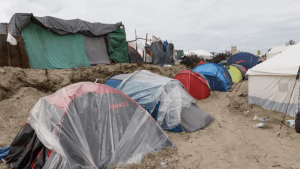I did 3 laps of backstroke and 3 laps of freestyle today. I did achieve the goal i set for myself in the last session. For the next session, my goal is to complete 7 laps.
Month: March 2019
March 2019: Session 2
March 2019: Session 1
NYAA long post
February 2019: Session 2
I did 2 laps of backstroke and 5 laps of freestyle. I reduced the resting time, set aside. I was able to achieve my goal of 7 laps.
February 2019: Session 2
Writer’s Fortnight – Article
Creating a better home for the Refugees.
“But in our camp, his story was everyone’s story, a single tale of dispossession, of being stripped to the bones of one’s humanity, of being dumped like rubbish into refugee camps unfit for rats.”
by Susan Abulhawa
Refugees are people forced to leave their countries due to war, violence, or in fear of persecution. The only way they can survive is if they go to these refugee camps and relocate to another country. The process of relocation can take weeks or even last a lifetime. Until they are relocated, these camps are like homes for them. They wish to leave these camps soon, because of the pathetic state of these camps and in search of a better life.
A photograph of France’s refugee camps. The photograph shows the unsightly and the unhygienic conditions that refugees live in.
The refugees live in ghastly conditions. Some camps lack electricity and water. Imagine having no water or electricity in your home, would you be able to survive? Diseases spread easily in these camps and one camp was even infested with rodents . Tuberculosis is rampant in such areas. It was also reported that a camp’s water had been contaminated with faeces. The conditions that these refugees live in are inhumane and they are at a higher risk of having mental breakdowns.
This state of living affects the health of refugees in an unpleasant way and takes a toll on their mental health as well. The future of these refugees is unsettled to begin with and because of these conditions, their present also becomes agonising. Many refugees have mental illnesses and many of them have tried to suicide as well. In addition to suicide, there exists high levels of anxiety, depression and PTSD in these camps.
To ameliorate this situation and make life better for the refugees, we must strive to improve their living conditions. Before opening borders, we should open our hearts and help these refugees as much as we can. If their living conditions improve, there will be less cases of suicide, depression etc.. in these camps.Their trauma will certainly not be completely gone ( as they have left their home countries ) but will lessen quite a bit and they wouldn’t feel as suicidal.
Some organisations like the UNHCR or the UN refugee agency, succour refugees by providing tents, disseminating plastic sheeting and developing emergency strategies, tools and guidelines and rushing in emergency aid to those who need it most. Another organisation called refugee support provides toiletries, clothing, food security etc…. Their aim is to offer humanitarian aid with dignity to the refugees, while also supporting the local economy.
Nevertheless, first and foremost, we should clinch that they have access to clean water and electricity. The government could provide essential help to them and the quantity of food that is rationed could also be increased to ensure that no one remains malnourished. We could also do some voluntary work to help them. If these factors are improved upon, the camps would become an actual refuge for refugees and not just a place that is unhygienic and the abode of diseases.
BIBLIOGRAPHY-
Cnet. See France’s refugee camps for yourself. Photograph. www.google.com/search?q=refugee+camps&source=lnms&tbm=isch&sa=X&ved=0ahUKEwj_56KWnbbgAhWUfn. ( Photograph)
Coletta, Olivia. “Refugee Camps: Poor Living Conditions and Their Effects on Mental Health.” Refugee Mental Health, 28 Mar. 2018, sites.duke.edu/refugeementalhealth/2018/03/27/refugee-camps-poor-living-conditions-and-their-effects-on-mental-health/.
“What is a Refugee? Definition and Meaning | USA for UNHCR.” How to Help Refugees — Aid, Relief and Donations | USA for UNHCR, www.unrefugees.org/refugee-facts/what-is-a-refugee/.
United Nations High Commissioner for Refugees. “Refugees.” UNHCR, www.unhcr.org/refugees.html.
Refugee Support, www.refugeesupport.eu/.




